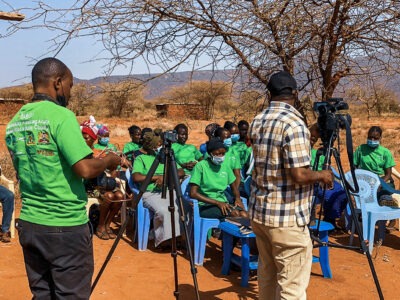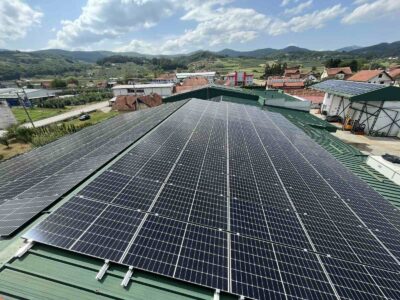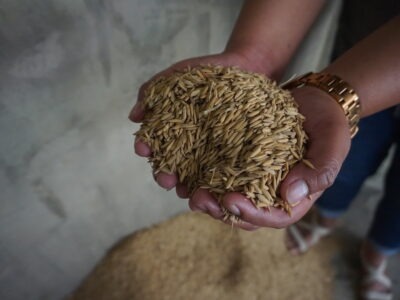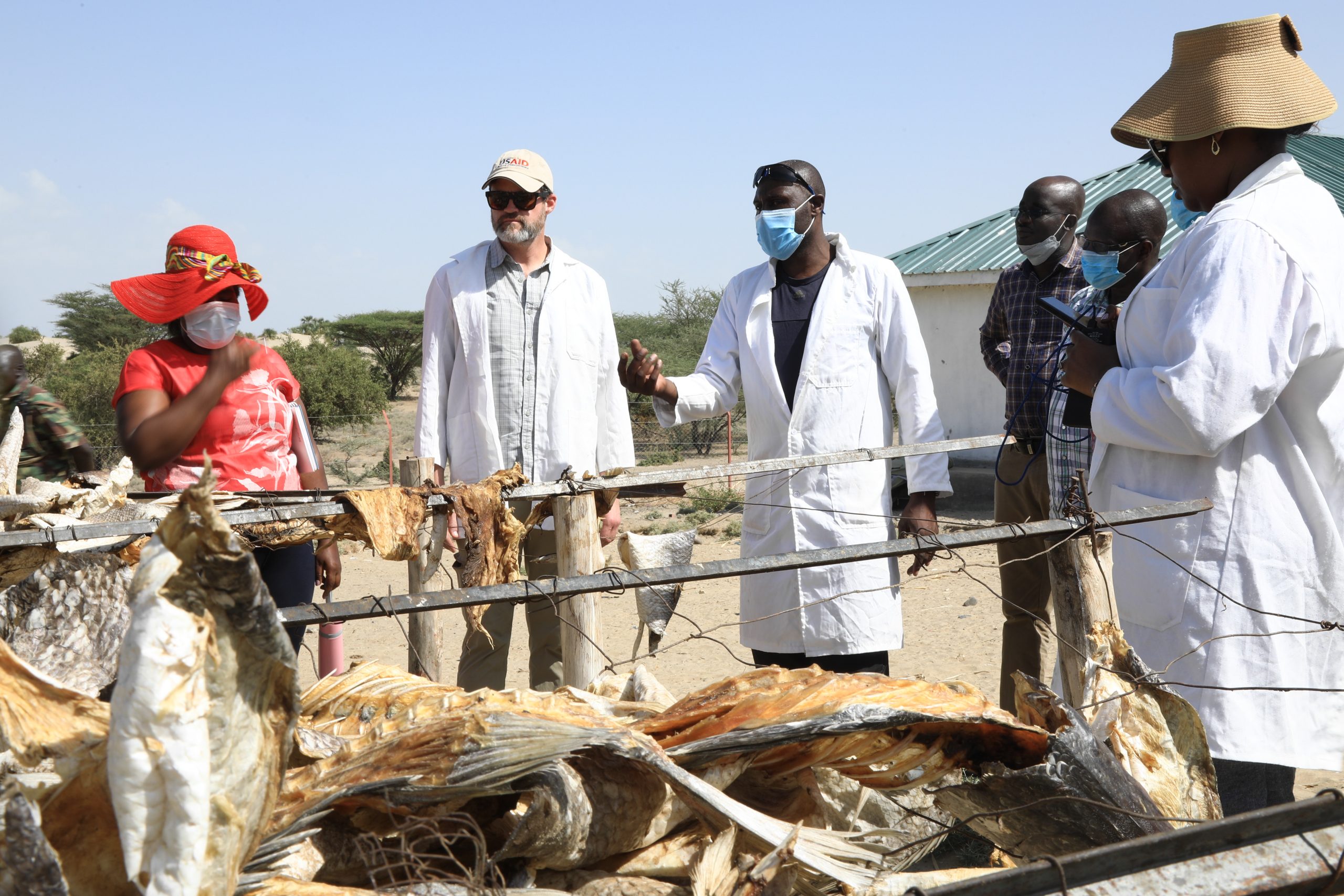
In pastoralist communities like those throughout Northern Kenya, poultry meat has long been associated with poverty and as a meal for women and children. Therefore, its level of consumption has been low in many households — but not anymore.
A visit to many homes and eateries in Turkana County now tells a different story. Chicken meat has become one of the most sought-after foods thanks to a social behavior change campaign jointly implemented by the county government and the Feed the Future Kenya Livestock Market Systems Activity. This campaign demystified cultural beliefs surrounding chicken meat and has led to increased uptake of chicken and chicken products, giving rise to many poultry farms and business opportunities for small- and medium-sized enterprises in the county.
Campaign Turns Poultry into In-Demand Food
James Ambani, the proprietor of Victorian Foods, which processes fish on the shores of Lake Turkana, had just begun processing poultry feed by using byproducts from the fish processing venture when the campaign started. At the time, the new product line had yet to fully take off due to cultural beliefs around poultry in the county. He had moved his business from western Kenya to Turkana County because of the challenges he encountered.
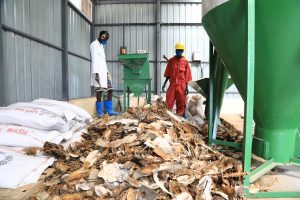
“While working in Kisumu as a fishmonger, I had endured disappointments from unscrupulous suppliers and cunning retailers who pushed my business to eminent closure by not paying for fish deliveries,” James said. The Activity’s offer to help James identify high-potential opportunities to not only improve his business but also catalyze market systems change and enhance nutrition and resilience enticed him to fully shift his operations to Turkana.
With support from the Activity, Victorian Foods began processing ice flakes that fishermen used to preserve fish before they were delivered to the factory. This significantly reduced pre-factory losses, improved the quality of fish supplied, and regularized the frequency with which they were delivered to the factory. However, disposal of the processing waste proved to be a challenge to his health, budget, and the environment.
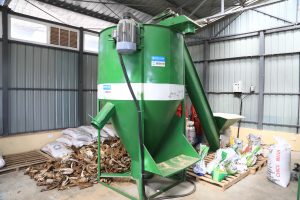
“I would become sick each time I discarded the waste after processing,” James said. “One day while on a brainstorming session with a friend focusing on sustainable development, an idea came up. I would say it is one of the best ideas I have ever had, which has since enhanced food security for an entire community. It was about value addition and taking advantage of opportunities available out of blue economy.”
The idea was to process parts of the fish that were considered waste, including the head, skeleton, and skin, to make fishmeal, an essential ingredient in poultry feed. The company then dedicated some of its operations to processing poultry feed and has been doing so for the last three years to supply to farmers in Turkana.
New Demand for Chicken Benefits Incomes and Nutrition
The county’s social behavior change campaign caused an unprecedented demand for poultry meat, overwhelming poultry farmers at first. Many had to increase their poultry sizes to ensure a constant supply. Now, this access to high-quality poultry feed is reducing the cost of inputs for farmers, with Victorian Foods as the main driver. The benefits are reaching local consumers and contributing to households’ nutritional requirements.
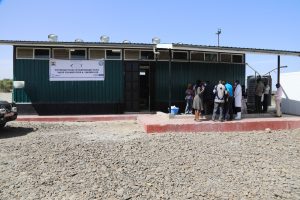
As part of the business development his enterprise received, James enrolled in the Activity’s mentorship program for both technical and business linkages support. Since then, the company has grown into a fully-fledged firm, creating jobs and incomes for 50 direct employees and opportunities for hundreds of others indirectly. The employees, mostly women and youth, are trained in chicken feed production, fish handling, processing, and packaging. Such trained personnel have increased the output capacity of chicken feed from about 100 kilograms of fish processed daily to 400 kilograms.
The feeds are packed in 50-kilogram bags retailing at US$26 per bag and distributed across the county. With business booming, Victorian Foods recently opened a new outlet in Kakuma town serving both host and refugee communities. This has significantly reduced production costs for local poultry farmers.
According to James, feedback from his customers has been excellent, as farmers appreciate the superior quality of Victorian Foods’ products and fair prices. Despite having received no accords yet, James appreciates that he has been able to touch thousands of lives.
“Many families in Turkana are now rearing chicken because of the availability of the feeds. Besides, the locals know chicken can always serve as an alternative source of food and income during unfriendly climate conditions.”
— James Ambani, Propietor, Victorian Foods, & LMS Activity participant
James participated in the 2021 Sustainable Blue Economy Conference, where he pitched innovations by Victorian Foods, including the production of fish leather as a sustainable fashion item under blue fashion. However, an insufficient supply of fish to meet the company’s demand is the main challenge his business faces. He attributes this to the fact that the local fishermen lack proper fishing gear and still use traditional fishing methods. Nonetheless, he is grateful that USAID and the people of Turkana have been supportive of his venture.
About Feed the Future Kenya Livestock Market Systems
This is a United States Agency for International Development (USAID)-funded program through the U.S. government’s Feed the Future Initiative that addresses global hunger, food security, and agricultural livelihoods. The objective is to create resilient, competitive, and inclusive livestock systems to reduce the prevalence and depth of poverty, household hunger, and chronic undernutrition in Northern Kenya. The program builds on other USAID investments and deepens USAID’s commitment to Kenya’s Ending Drought Emergencies Framework, with a particular focus on strengthening diverse, viable economic opportunities, human capital, the natural resource base, and institutions that will drive economic development in Kenya’s arid lands. This framework also supports drought risk and knowledge management. The Activity works in the five counties of Garissa, Wajir, Isiolo, Marsabit, and Turkana.
Learn more about our work in Kenya here.
Learn more about the Feed the Future Kenya Livestock Market Systems Activity here.

